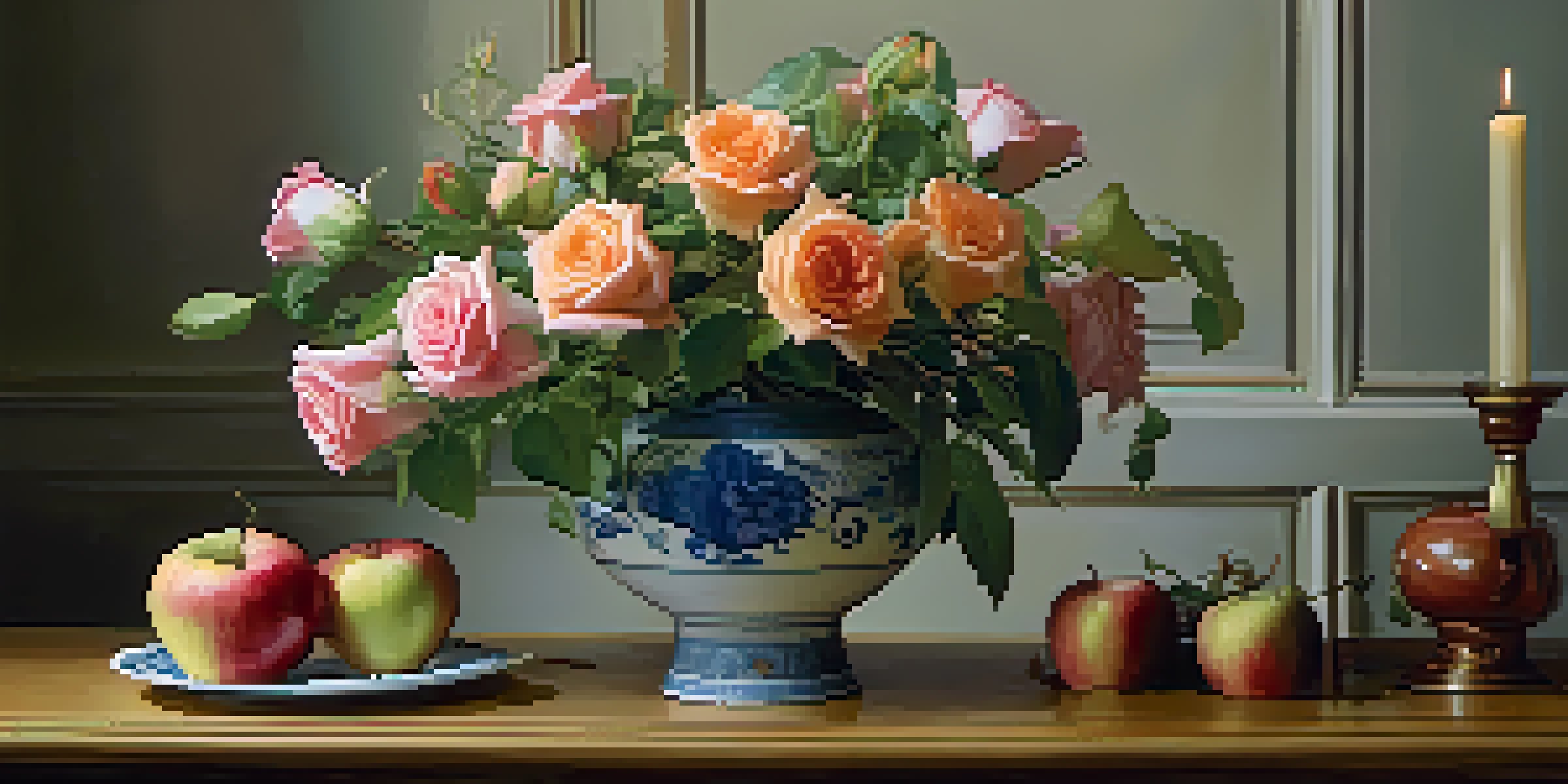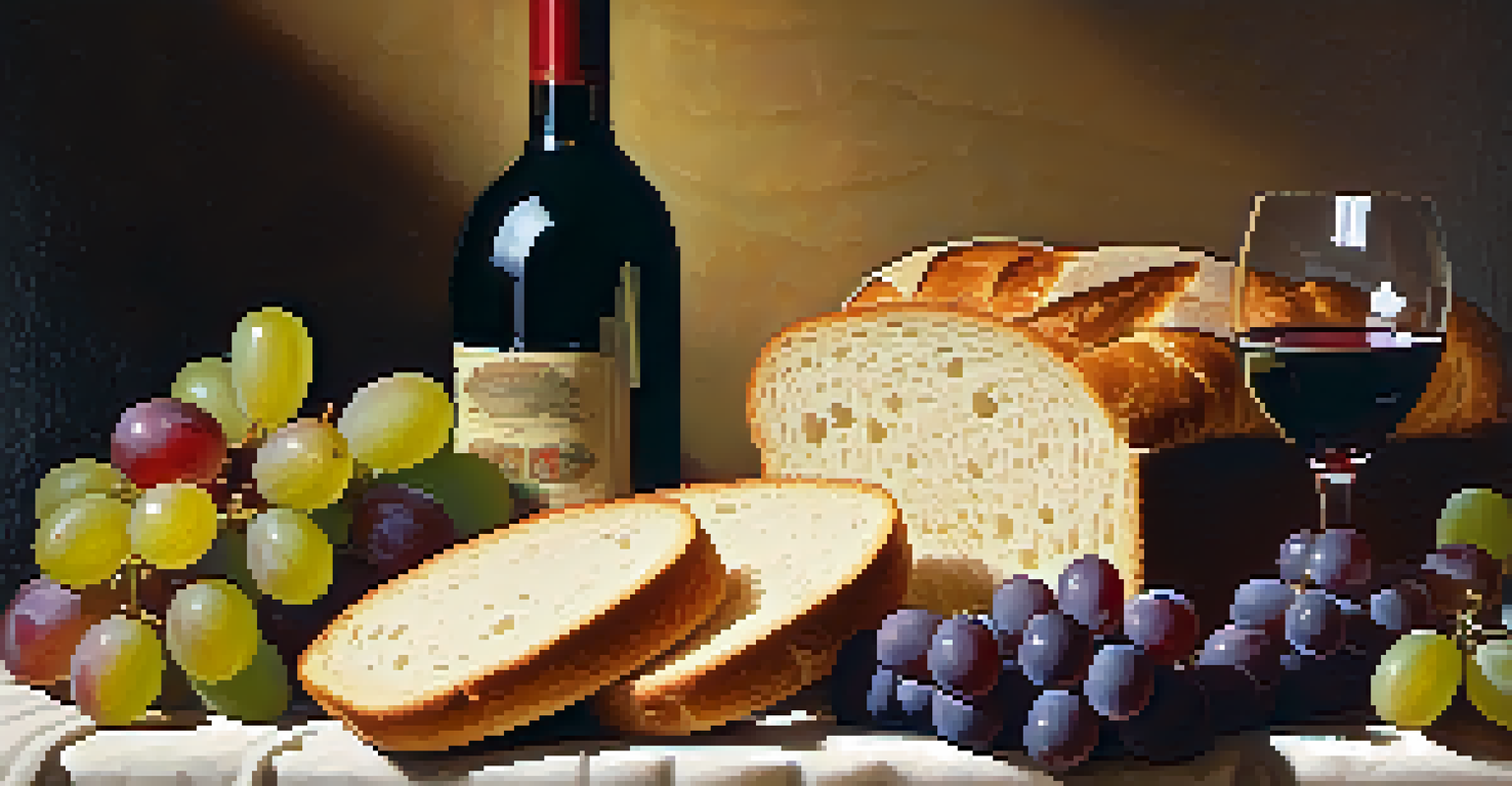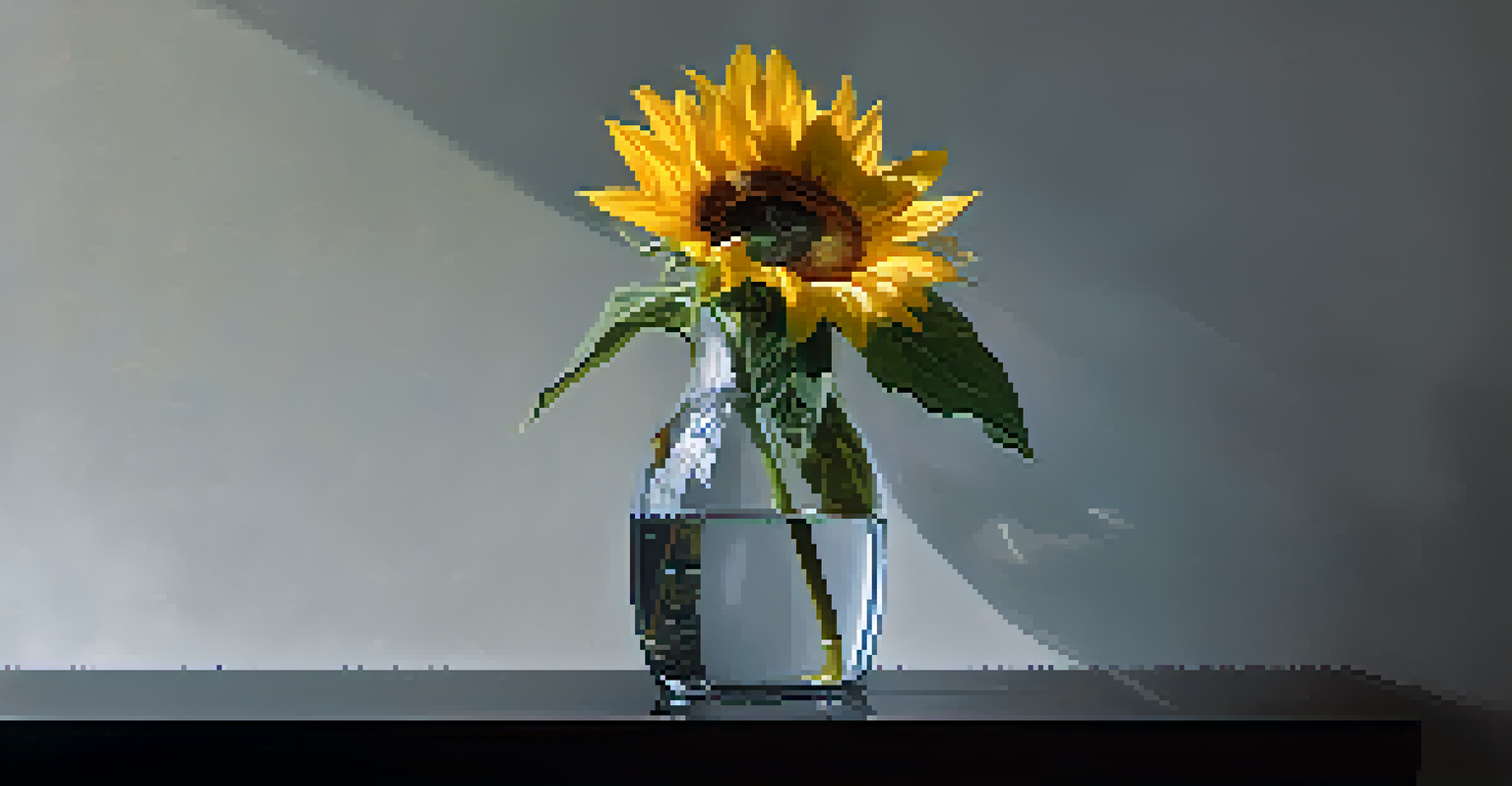Symbolism in Still Life: What Objects Really Mean

Understanding the Basics of Still Life Symbolism
Still life art is more than just a collection of inanimate objects; it's a narrative waiting to be uncovered. Each item in a still life holds a significance, often representing broader themes such as mortality, abundance, or the passage of time. For instance, a wilting flower may symbolize the fleeting nature of life, while a bountiful harvest can reflect prosperity.
Art is the most beautiful of all lies.
Artists carefully choose each object to convey a message, creating layers of meaning that invite viewers to look closer. The arrangement, lighting, and even the colors used play into the symbolism, enhancing the emotional impact. This is where the beauty of still life lies: in its ability to communicate complex ideas through simplicity.
By recognizing these symbols, we can appreciate the depth of still life artworks and the intentions behind them. Understanding these elements not only enriches our viewing experience but also connects us with the historical and cultural contexts in which these works were created.
Common Symbols in Still Life Art
Certain objects frequently appear in still life paintings, each carrying its own symbolic weight. For example, skulls are often used to symbolize mortality, reminding us of the inevitable end we all face. Similarly, fruits like apples can represent temptation or knowledge, echoing themes found in various cultural narratives.

Flowers, too, have a rich vocabulary of symbolism. Roses might evoke love, while lilies can signify purity. The beauty of these symbols lies in their ability to convey emotions and ideas that transcend language, creating a universal dialogue through visual art.
Symbolism Reveals Deeper Meanings
Each object in still life art carries significant symbolism, reflecting broader themes such as mortality and abundance.
By exploring these common symbols, viewers can gain insight into the artist's message and the era in which they were working. This understanding can turn a simple observation of objects into a profound reflection on life, death, and everything in between.
The Role of Color in Symbolism
Color plays a crucial role in enhancing the symbolism within still life art. Different colors evoke different emotions and associations; for instance, red can symbolize passion or danger, while blue often represents calmness or sadness. An artist's choice of color can significantly alter the viewer's perception of the entire composition.
The painter tries to master the art of seeing; the artist's job is to make the unseen seen.
Consider a still life featuring dark, muted colors; it might evoke feelings of melancholy or introspection. In contrast, a bright and vibrant palette could convey joy and celebration. By manipulating color, artists can guide the emotional response of their audience, making the symbols even more impactful.
Understanding the relationship between color and symbolism allows us to appreciate the artist's intentions more fully. It highlights the thoughtful decisions that go into creating a piece, showing how even the most subtle choices can deepen the narrative.
Cultural Context and Symbolism in Still Life
The meaning of objects in still life can shift dramatically depending on cultural context. For instance, in Western art, bread often symbolizes sustenance and life, while in other cultures, it may carry different connotations, such as hospitality or wealth. This variability enriches our understanding of symbolism across different societies and historical periods.
Artists often draw upon the cultural significance of objects to convey messages that resonate with their audiences. By incorporating items that have specific meanings within their cultural context, artists can create works that speak to shared experiences and values. This connection can be a powerful way to engage viewers emotionally.
Color Enhances Emotional Impact
The choice of color in still life can evoke different emotions, guiding viewers' perceptions and deepening the narrative.
Exploring the cultural dimensions of symbolism allows us to see still life art as a reflection of the society in which it was created. It reminds us that art is not created in a vacuum; it is a dialogue with the world, capturing the essence of human experience.
The Influence of Historical Events on Symbolism
Historical events often shape the symbolism found in still life art. For example, during times of famine or war, artists might depict sparse meals or objects that convey a sense of loss and scarcity. These choices reflect the societal mood and can serve as a commentary on the human condition during tumultuous times.
Moreover, the advent of different artistic movements brought new interpretations of traditional symbols. The Baroque period, for instance, emphasized dramatic contrasts and emotions, often using symbols like extinguished candles to signify the transience of life. This evolution showcases how context influences artistic expression.
By examining the historical backdrop of still life paintings, we can uncover layers of meaning that speak to the artist's response to their environment. This awareness enriches our viewing experience and allows us to engage with art on a deeper level.
Personal Interpretation: Viewer as Co-Creator
One of the fascinating aspects of still life symbolism is that viewers bring their own interpretations to the artwork. While artists imbue objects with meaning, each observer's background, experiences, and emotions can influence how they perceive those symbols. This personal connection can transform the artwork into a dialogue between the viewer and the artist.
For instance, a viewer may see a particular fruit in a still life and associate it with a cherished memory, such as a family gathering. This individual interpretation adds a unique layer to the artwork, reminding us that art is not a one-way street but a collaborative experience.
Cultural Context Shapes Interpretation
The meaning of objects in still life varies across cultures, enriching our understanding of the symbolism and the artist's message.
Encouraging viewers to engage with the symbolism allows for a more dynamic relationship with the art. It invites us to reflect on our own lives and the meanings we ascribe to everyday objects, making the experience of viewing art deeply personal and rewarding.
Conclusion: The Lasting Impact of Symbolism in Still Life
The exploration of symbolism in still life art reveals the profound connections between objects, emotions, and human experiences. Understanding these symbols enhances our appreciation of the artwork and fosters a deeper connection to the themes it conveys. Through still life, artists encourage us to reflect on life’s complexities and the narratives formed by seemingly ordinary objects.
As we engage with these artworks, we unlock the potential for personal reflection and insight. The act of interpreting symbolism transforms us from passive viewers into active participants in the storytelling process. Each object becomes a portal into larger themes that resonate across time and culture.

Ultimately, the lasting impact of symbolism in still life lies in its ability to provoke thought and inspire dialogue. It reminds us that even the simplest of objects can carry immense meaning, inviting us to look beyond the surface and explore the stories they tell.